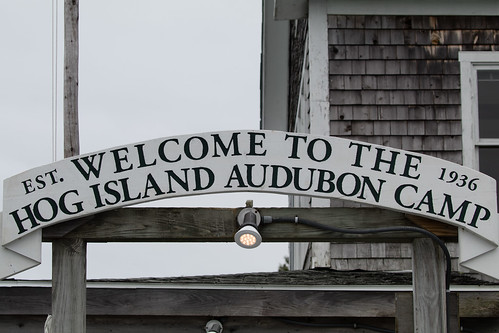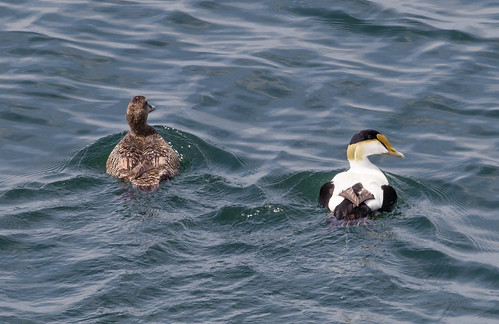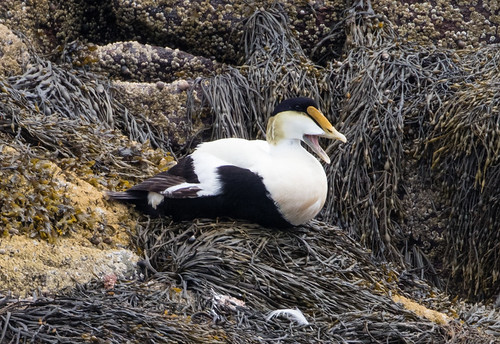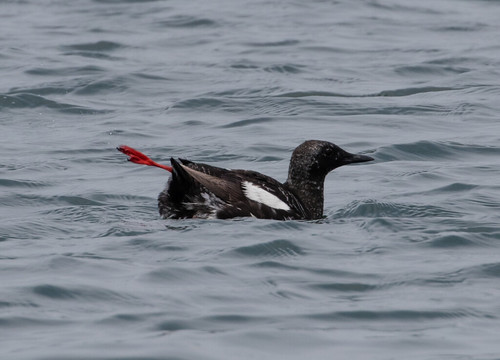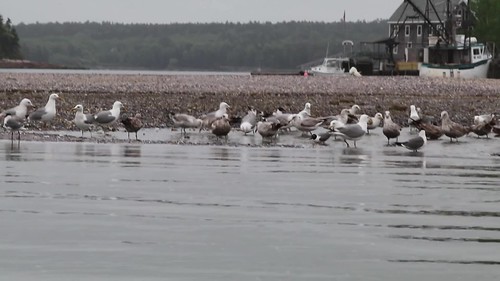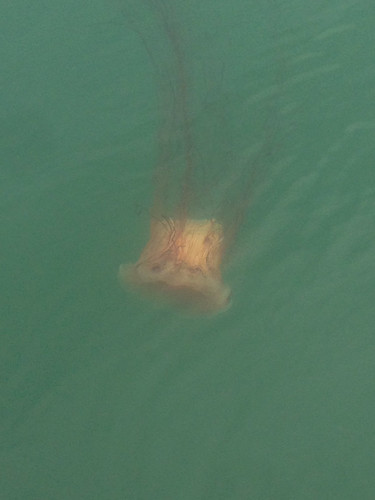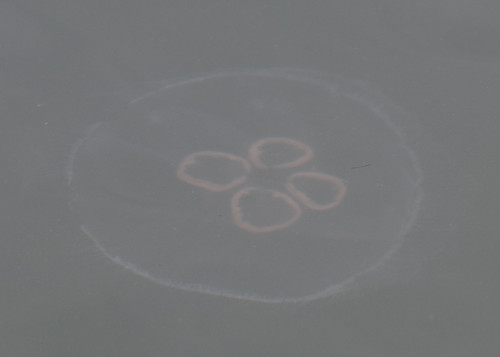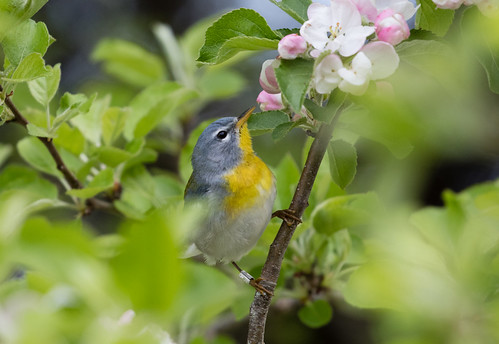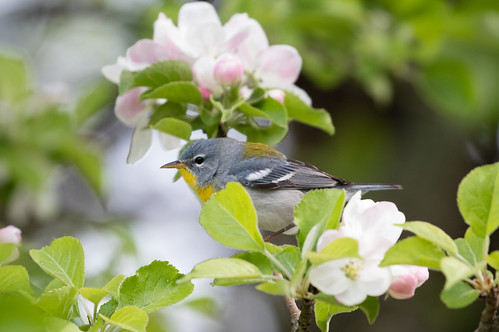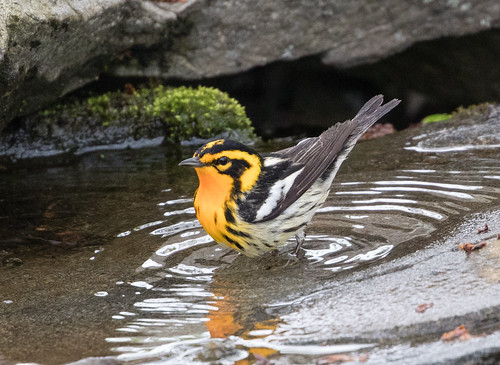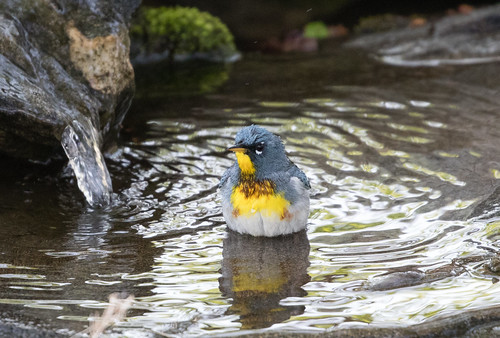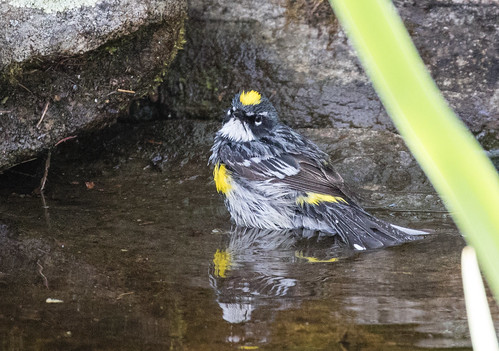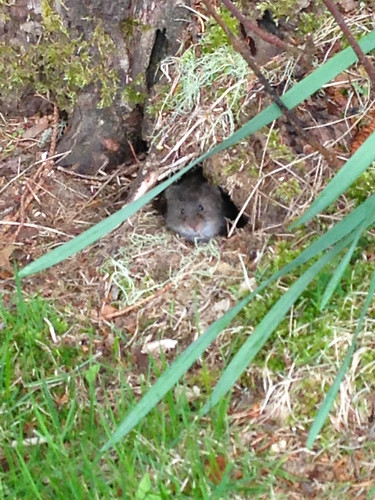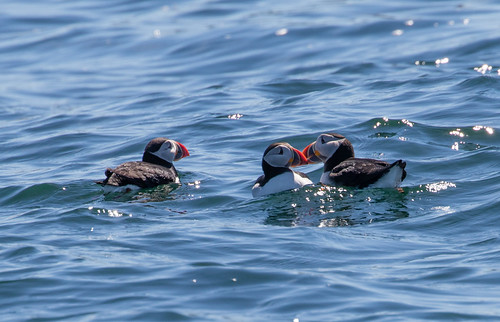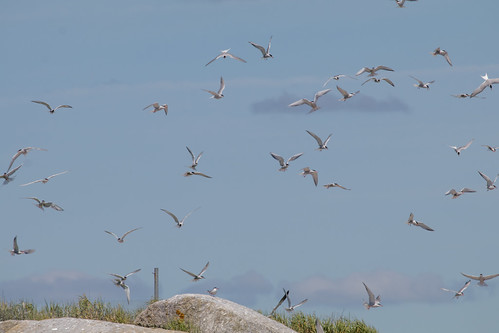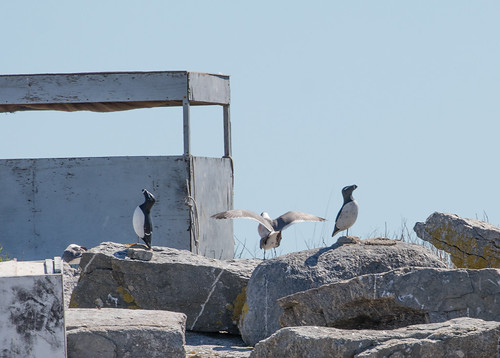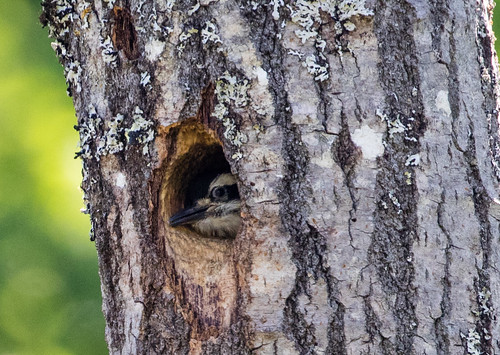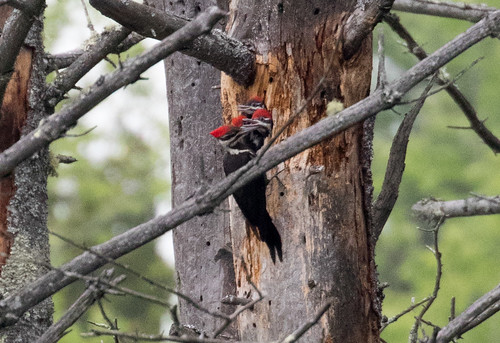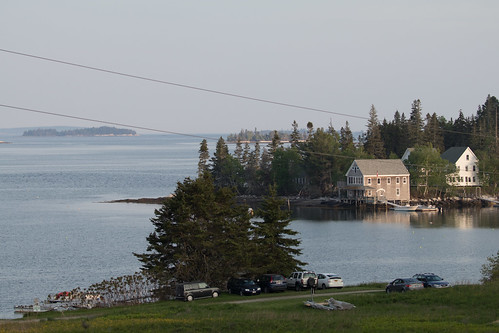Last month, I spent two weeks on Hog Island in Maine, where
I was one of the instructors for two week long programs, one about Breaking
into Birding, the other about the Joy of Birding. Hog Island is a small island
too close to the mainland to have many of the seabirds people associate with
the popular Maine Audubon camp—a boat trip each session brings participants
much further from the mainland to Eastern Egg Rock, where Atlantic Puffins have
been successfully reintroduced and Common, Arctic, and Roseate Terns nest. The
only oceanic birds we saw every day from Hog Island itself were Common Eiders...
and Black Guillemots.
I saw only one or two Ring-billed Gulls while I was
there—instead, the gulls around Hog Island were mostly Great Black-backed,
Herring, and Laughing.
The landscape looks surprisingly like northern Minnesota
until you remember that the water lapping on the shore near your cabin is salt
water. Walking about the island from day to day, seeing the changes as the tide
came in and out, was disconcerting for someone who has always lived in
landlocked states. And when you look into Lake Superior, somehow you never see jellyfish.
The land birds on the island were pretty much what you’d
expect to see in north woods forests, such as Northern Parulas, Black-throated
Green, Magnolia, and Blackburnian Warblers, Song Sparrows, Eastern Phoebes. The
warblers are of course tricky to see well, though when I first arrived while
apple trees were in blossom, the Parulas spent a lot of time at eye level
eating tiny insects in the blossoms.
And a lovely water feature with a
recirculating pump gave me great looks at a variety of warblers, especially
during the dry spell we had the first week.
A pair of Osprey nests right near the main buildings—these
are the famous Steve and Rachel, the subjects of a popular nest cam. I was
there when the first two of three eggs hatched. So far the chicks are doing
well, but the possibility of Bald Eagles snatching the chicks is a clear and
present danger—both of last year’s chicks were taken from the nest when they
were about a month old.
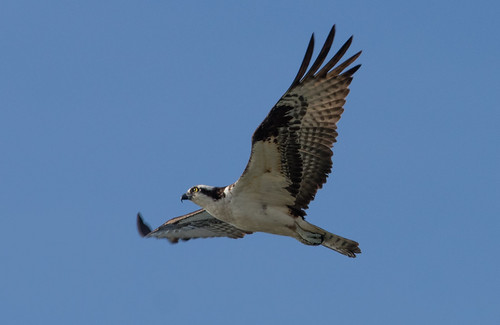

Near the main buildings, there was also an interesting little population of meadow voles that seemed as interested in us as I was in them.
People arrive on the island on Sunday afternoon, and after
settling into their rustic cabins, we start meeting for sessions in the
afternoon. Days were mostly spent on field trips with some workshops ending
with an evening program.
My favorite day of all was when we spent the morning on a
boat trip to Eastern Egg Rock to see puffins. We don’t get up close and
personal the way I’ve done on trips to Machias Seal Island, where the Canadian
Coast Guard maintains a station and allows a limited number of visitors each
day to spend an hour or so in an observation blind seeing puffins and
Razorbills at very close range. Only a small staff of researchers are allowed
on Eastern Egg Rock, but we got to see plenty of puffins in the water...
along
with lots of terns flying over.
On the island, we saw some Razorbill decoys but
no real ones.
After cruising around Egg Rock, we boated to Harbor Island for a
picnic lunch and an invigorating hike.
We spent another day hiking on the mainland, a tradition of
the camp since Roger Tory Peterson started it back in the 1930s. On my hike
there the first week, we came upon a Hairy Woodpecker nest, the chicks sticking
their heads out of the cavity entrance for feedings.
By the following week,
they had fledged, but instead, we found a Pileated Woodpecker nest with babies
poking out.
The instructor staff was great fun to work with, including
top birders like Tom Auer from Cornell who is part of the eBird team; Charles
Duncan, internationally acclaimed shorebird conservationist; Pete Dunne,
popular author; Steve Kress, whose seminal graduate research on Atlantic
Puffins paved the way for Project Puffin; Wayne Peterson, a top birder and
conservationist who is writing the American Birding Association’s field guide
to birds of Massachusetts; and John Pumilio, Director of Sustainability at
Colgate College.
On the windless Saturday morning between program sessions,
when I had the island pretty much to myself, I set my microphone and recorder
out near my cabin and let it pick up the bird songs and soft ocean waves. Oddly
enough, that happened to be the only morning during the entire two weeks when a
late migrant, an Eastern Wood-Pewee, showed up on the island, singing away. He
apparently moved on that night, but the recording proves he was there. That’s the background sound I used for today’s radio program; you can listen to or download the full 37-minute recording here. It’ll keep Hog Island fresh in my mind until I return next year, to Hog Island and also to
speak at the LL Bean and the Acadia Birding Festivals.
